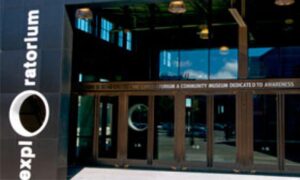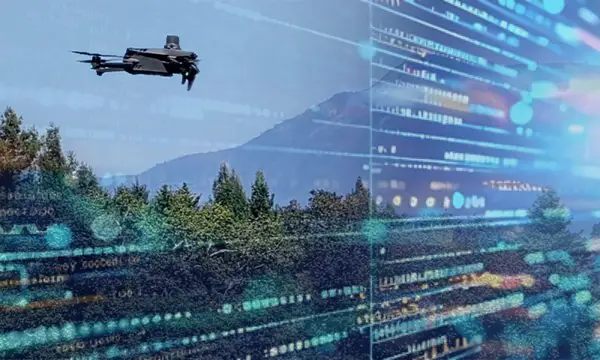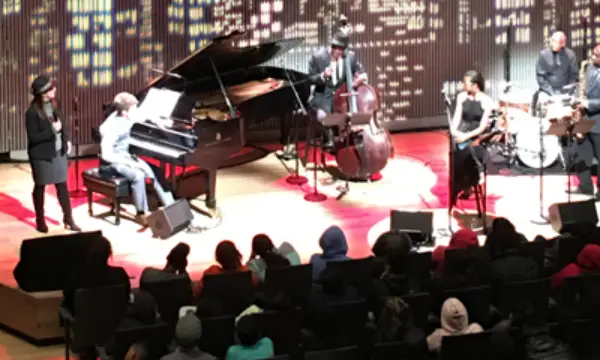- About
- Network
- Community
- Initiatives
- News
- Events
- Blog
- Publications

The Exploratorium and CENIC
Categories Cultural & Scientific Libraries Private Sector RENS & NRENS
Universities in California and around the globe use CENIC’s CalREN network to conduct research in areas such as cancer genomics, the human genome and microbiome integration, biomolecular structure modeling, galaxy formation and evolution, particle physics, simulations for earthquakes and natural disasters, and climate modeling.
The network is also home to researchers working outside universities. For example, the network provides a connection to scientists aboard the Ocean Exploration Trust's vessel Nautilus, which views the ocean floor and shares their discoveries live with the Exploratorium through the CalREN backbone. Scientists at NOAA conduct research on environments, and living resource systems in coastal and offshore waters of the Pacific Ocean, and scientists at the Morrison Planetarium at the California Academy of Sciences create visualizations of the latest findings, discoveries, and theories about our universe.
The Exploratorium was the first cultural organization to join CENIC and their connection to CalREN has supported remarkable programming and powered scientific discovery.
The Exploratorium is a playful learning laboratory of more than 600 interactive exhibits and experiences that ignite curiosity, and encourage inquiry-based learning. Since 1969, the Exploratorium has influenced generations of entrepreneurs, artists, scientists, teachers, students, children, museum professionals and everyday doers, influencing millions of people annually around the globe. Three of their current projects depend on the high-speed connectivity available through their 1 Gbps connection to CalREN.
Connecting with Ships at Sea
The Exploratorium hosts a series of live chats with scientists and educators on board the Exploration Vessel Nautilus, which has been exploring the ocean floor and sharing their discoveries live with the public worldwide. In addition to documenting deep-sea ecosystems and geology, technicians pilot Hercules, a remotely operated vehicle (ROV) to explore ancient shorelines that became submerged by rising seas after the last ice age. The expedition season targets the ancient submerged shorelines and deep-sea ecosystems of Oregon and may discover caves once used by Native Americans during the last ice age when sea level was much lower than today. Other deep-sea targets are Northern California’s Cordell Bank National Marine Sanctuary whose seafloor has never been explored and a study of ocean acidification impacts in the Olympic Coast Canyon off the coast of Washington. The E/V Nautilus is owned and operated by the Ocean Exploration Trust.
Accessing Data on the Conditions in the Ocean and Atmosphere
As part of the Wired Pier Environmental Field Station, the Exploratorium operates and maintains oceanic and atmospheric sensors on the pier and hosts instruments installed and maintained by research and education partners. The Wired Pier serves as a node in numerous scientific observation networks, including NOAA’s Ocean Acidification Network, and UC Berkeley’s BEACON greenhouse gas regional network. Visitors can also see things like solar eclipses, evidence of climate change, and undersea images through virtual field trips to places such as NASA’s Jet Propulsion Laboratory, Antarctica, the Nautilus research vessel, and CERN, the European Organization for Nuclear Research. Originally, videos were made and then broadcast but now a significant amount of this kind of content is live-streamed.
Viewing a Solar Eclipse
In March 2016, San Francisco’s Exploratorium collaborated with NASA and the National Science Foundation to produce a live broadcast of the total solar eclipse from the Federated States of Micronesia. With a team in Woleai to film and broadcast the event over the CalREN network, the Exploratorium was able to share this amazing phenomenon with educators, students, and the general public through the Internet, mobile phones, and television.
On August 21, 2017, a total solar eclipse crossed the continental United States, from Oregon to South Carolina. With the support of NASA, the Exploratorium sent field crews to two different locations along the path of totality. Their high-powered telescopes and high-end video gear transmitted a stunning live broadcast of the total solar eclipse. Special telescope configurations captured live images of the sun with high dynamic range quality. The Exploratorium h developed Total Solar Eclipse, a free app for iOS and Android devices. The app, which includes information about the eclipse and safe viewing techniques, allowed tens of thousands of users to view the live streams of the eclipse live from their phones and tablets, and share the streams to televisions in HD video. It also enabled users to move seamlessly between the Exploratorium’s five live streams of the eclipse, which include direct telescope feeds from Wyoming and Oregon, English and Spanish live coverage programs featuring scientists from the Exploratorium and NASA, and a sonification of the eclipse with a live performance by Kronos Quartet at the Exploratorium’s home on the San Francisco waterfront.
Lookmobile Extends Library Programs
The CalREN network is both a fiber network and a human network with 20 million users, including the vast majority of K-20 students together with educators, researchers, and individuals at other vital public-serving institutions. CENIC members are part of the world’s largest education system; they include the California K-12 system, California Community Colleges, the California State University system, cultural institutions, healthcare organizations, California’s Public Libraries, the University of California system, Stanford, Caltech, and USC. CENIC’s human network can provide a catalyst for collaboration. A good example of this is a recent collaboration between San Mateo County Libraries (SMCL) and the Exploratorium.
A mobile observatory, the Lookmobile, will provide SMCL with the ability to tour a portable, interactive observatory to all 12 of their site locations and beyond. As part of SMCL’s continued commitment to community engagement, the Lookmobile will encourage visitors to see light in a new way, create a map of their neighborhood, draw their friends, and play in a pool of San Mateo fog. The Lookmobile was collaboratively designed to allow for guided classroom activities, family participation, and open-ended discovery. The installations do not require supervision but library staff can utilize the Lookmobile as they extend their programs into outdoor and even off-site locations. The Lookmobile consists of four core interactive experiences and a mobile “Fog Trike” which can operate separately or in tandem. Moving from the light to the dark, visitors are invited to draw their friends and surroundings with “Perspective Window” or enter the dream-like light of a pinhole camera wall. Surrounded by evocative maps and invited to pin their own creations on the walls around them, the Lookmobile was intended to be an evolving work-in-progress, adding new elements and linking communities as it travels.
Related blog posts
CENIC Members Enable Data-Driven Agriculture: Optimizing Harvests in a Changing Environment
The use of technology in agriculture to increase yield and decrease resources is the focus of an innovative project fueled by CENIC and its collaborative partners: a novel model of precision agriculture in the vineyards.
The Venue is the World: CENIC Helps SFJAZZ Share Music with Everyone
Learn how Mount Allen shares musical experiences with the public through his role at San Francisco Jazz (SFJAZZ), which uses CENIC infrastructure to livestream performances to classrooms and libraries across the state.


